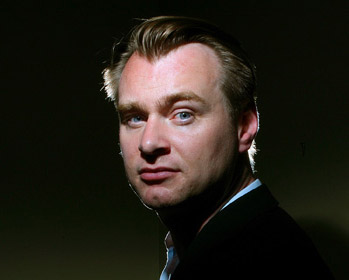Recently the DGA conducted an interview with him, which I think any fan of his and film will find very interesting.
http://www.dga.org/Craft/DGAQ/All-Articles/1202-Spring-2012/DGA-Interview-Christopher-Nolan.aspx
On shooting on film:
On 3D:
On CGI:
And finally, his biggest secret revealed:
It's not just clothes, it's his work uniform.

"'sup"
http://www.dga.org/Craft/DGAQ/All-Articles/1202-Spring-2012/DGA-Interview-Christopher-Nolan.aspx
On shooting on film:
Q: You and your cameraman, Wally Pfister, are—along with Steven Spielberg—among the last holdouts who shoot on film in an industry that’s moved to digital. What’s your attraction to the older medium?
A: For the last 10 years, I've felt increasing pressure to stop shooting film and start shooting video, but I've never understood why. It's cheaper to work on film, it's far better looking, it’s the technology that's been known and understood for a hundred years, and it's extremely reliable. I think, truthfully, it boils down to the economic interest of manufacturers and [a production] industry that makes more money through change rather than through maintaining the status quo. We save a lot of money shooting on film and projecting film and not doing digital intermediates. In fact, I've never done a digital intermediate. Photochemically, you can time film with a good timer in three or four passes, which takes about 12 to 14 hours as opposed to seven or eight weeks in a DI suite. That’s the way everyone was doing it 10 years ago, and I've just carried on making films in the way that works best and waiting until there’s a good reason to change. But I haven't seen that reason yet.
On 3D:
Q: Speaking of technical changes, was there any pressure to do The Dark Knight Rises in 3-D?
A: Warner Bros. would have been very happy, but I said to the guys there that I wanted it to be stylistically consistent with the first two films and we were really going to push the IMAX thing to create a very high-quality image. I find stereoscopic imaging too small scale and intimate in its effect. 3-D is a misnomer. Films are 3-D. The whole point of photography is that it’s three-dimensional. The thing with stereoscopic imaging is it gives each audience member an individual perspective. It’s well suited to video games and other immersive technologies, but if you're looking for an audience experience, stereoscopic is hard to embrace. I prefer the big canvas, looking up at an enormous screen and at an image that feels larger than life. When you treat that stereoscopically, and we've tried a lot of tests, you shrink the size so the image becomes a much smaller window in front of you. So the effect of it, and the relationship of the image to the audience, has to be very carefully considered. And I feel that in the initial wave to embrace it, that wasn’t considered in the slightest.
On CGI:
Q: Because of the kind of films you make, people might assume you use lots of computer-generated imagery, but you actually prefer models, mattes, and in-camera effects. When do you like to use CGI?
A: The thing with computer-generated imagery is that it’s an incredibly powerful tool for making better visual effects. But I believe in an absolute difference between animation and photography. However sophisticated your computer-generated imagery is, if it’s been created from no physical elements and you haven’t shot anything, it’s going to feel like animation. There are usually two different goals in a visual effects movie. One is to fool the audience into seeing something seamless, and that’s how I try to use it. The other is to impress the audience with the amount of money spent on the spectacle of the visual effect, and that, I have no interest in. We try to enhance our stunt work and floor effects with extraordinary CGI tools like wire and rig removals. If you put a lot of time and effort into matching your original film elements, the kind of enhancements you can put into the frames can really trick the eye, offering results far beyond what was possible 20 years ago. The problem for me is if you don’t first shoot something with the camera on which to base the shot, the visual effect is going to stick out if the film you’re making has a realistic style or patina. I prefer films that feel more like real life, so any CGI has to be very carefully handled to fit into that.
And finally, his biggest secret revealed:
Q: One last thing: I’ve noticed that while many of your peers wear casual clothing and baseball caps to work, it’s not unusual for you to sport a dark suit or a white linen jacket on the set. Why get so dressed up?
A: [laughs] I went to a boarding school where we had to wear a uniform, and I got used to using all the pockets in my jacket. It’s just what I’m comfortable in. I don’t like to think about what to wear, so I just wear the same thing every day. When I first started shooting with a crew on Memento I remember trying to pick up a sandbag and everyone was shouting at me that I wasn’t allowed to do that because there were specific people for that job. As much as I’d like to be able to get my hands dirty, I don’t usually get to do so. So I dress the way I would for a day at the office. It’s just easier that way.
It's not just clothes, it's his work uniform.

"'sup"
